Garden Ideas for Rectangular Garden: Transform Your Space with These Tips
A rectangular garden can be a wonderful addition to your home, providing a versatile space for relaxation, entertainment, and gardening. Whether you have a small backyard or a larger area, there are endless possibilities for transforming your rectangular garden into a beautiful and functional space.
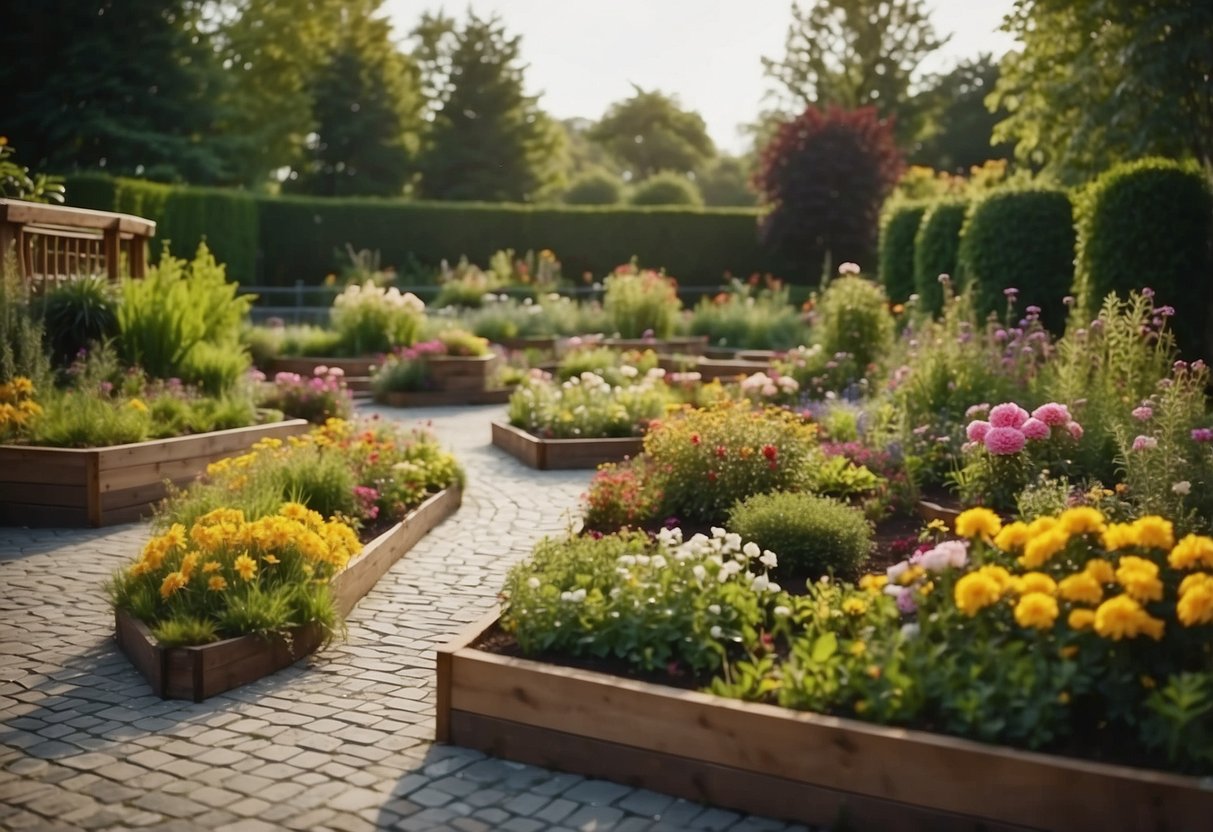
Wondering how to make the most out of your rectangular garden? This article will provide you with creative ideas and practical tips to help you design and enhance your garden, making it a breathtaking sanctuary you’ll love spending time in.
1) Raised Vegetable Beds

Raised vegetable beds are perfect for making the most out of your rectangular garden. They keep your plants organized and make it easy to manage soil quality.
You can build them from materials like wood, stone, or metal. These beds can be any size, making them versatile for different garden spaces.
Consider planting vegetables like tomatoes, peppers, and beans. They grow well in raised beds and are easy to care for.
2) Vertical Planter Walls
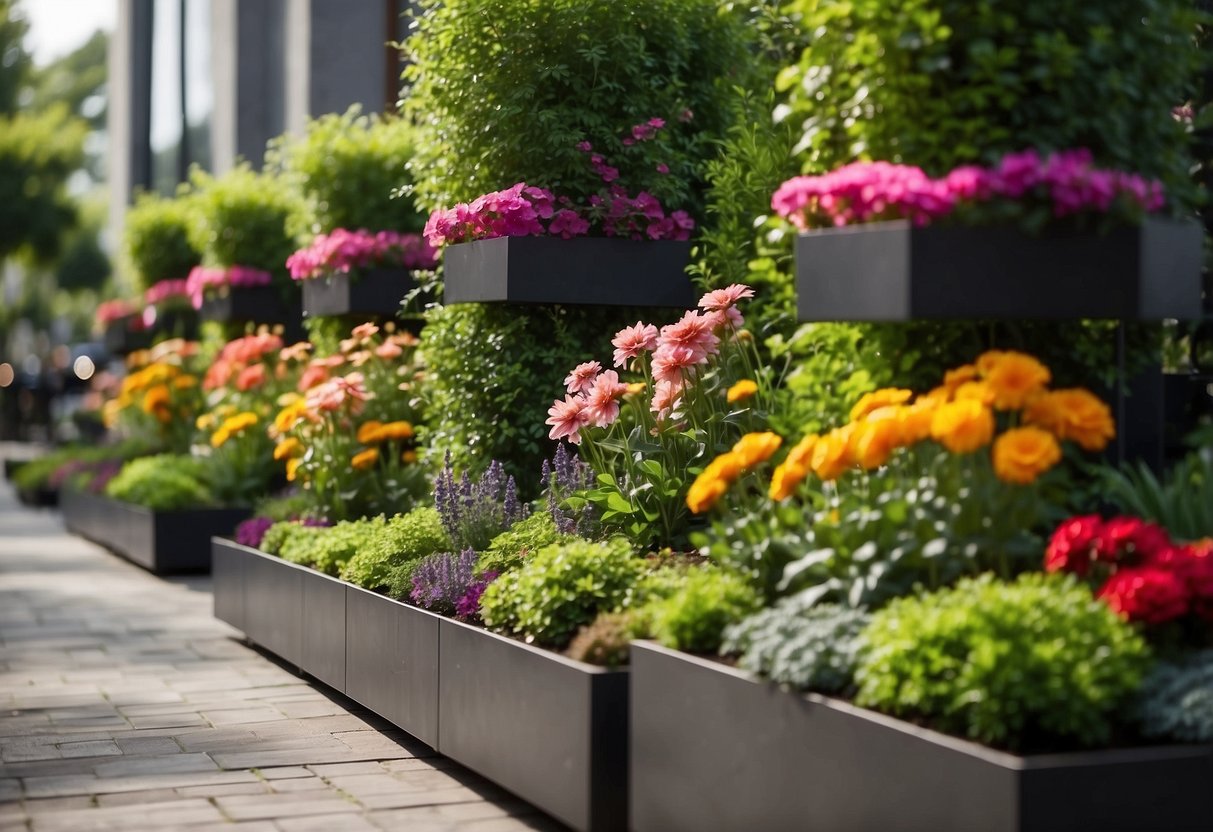
Vertical planter walls can transform a rectangular garden. They maximize space and add greenery to plain walls or fences.
You can create a vertical garden by attaching planters to a wooden slat wall. This method is easy and customizable.
Another idea is using a strawberry tower garden. This project uses leftover materials and is great for trailing plants.
3) Modern Water Features
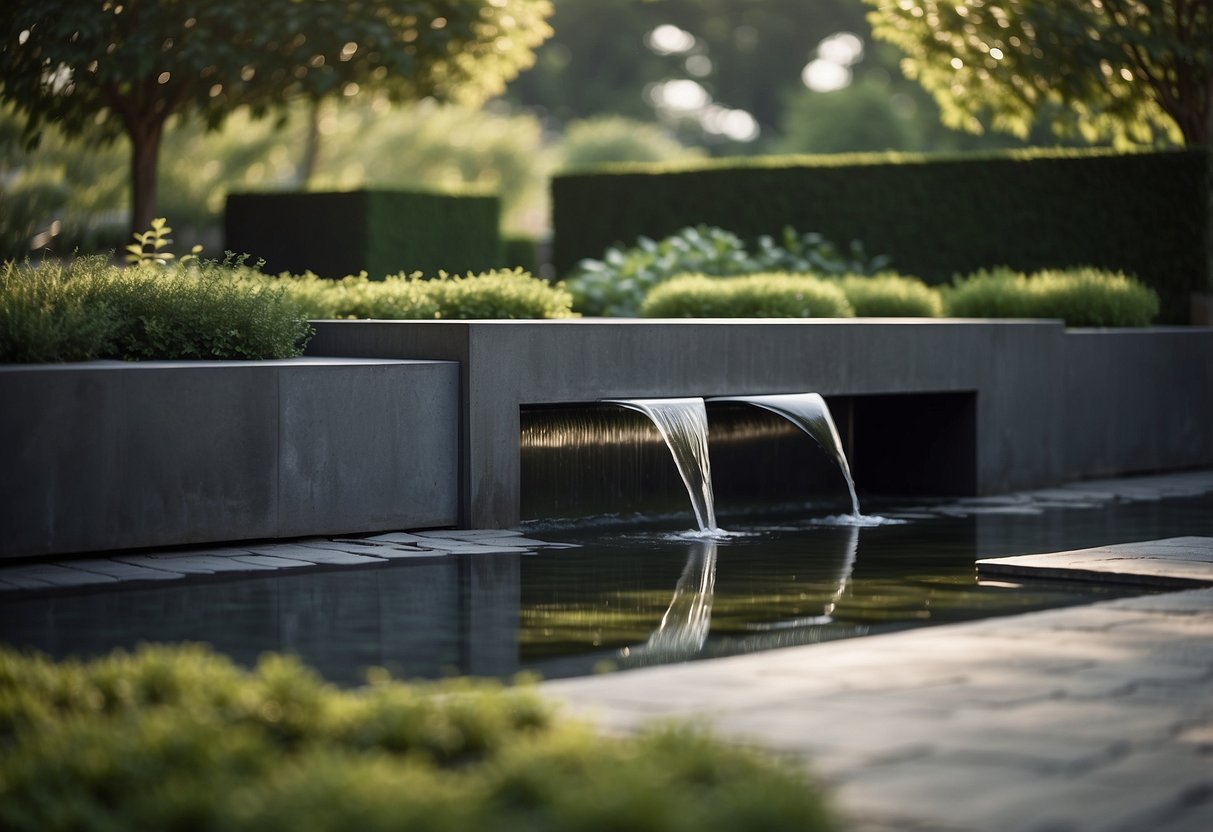
Adding water features can bring a sleek, modern touch to your rectangular garden.
A modern garden pool with clean lines can make a bold statement. Use plants like evergreens and hostas around the pool to enhance its look.
Consider a concrete and metal fountain for a contemporary feel. This can be combined with water hyacinths and pebbles to create a beautiful centerpiece.
A simple steel bowl is another great option. It’s low-maintenance and looks stylish with minimal effort.
4) Garden Pathways

Garden pathways can add a lot of charm to your rectangular garden. You can create a modern look using wooden slats and white gravel. Arrange the slats in a pattern and surround them with gravel to make a sleek pathway.
Another idea is to use curved flagstone paths. This gives a more natural feel and can lead you from one end to the other.
If you prefer a rustic touch, consider wood chips. They’re economical and can be easily spread to create a soft, natural walkway.
5) Pergolas with Climbing Vines

Adding a pergola with climbing vines can transform your rectangular garden. The vines bring a natural, airy feel to the structure. Trumpet vines, for instance, are popular and attract hummingbirds with their vibrant red, orange, and yellow flowers.
Morning glory is another great option. Its bright purple-blue flowers open in the morning and close in the evening, adding a dynamic element to your garden. To learn more about climbing vines that flourish on pergolas, visit this resource.
6) Herb Spiral Gardens

Herb spiral gardens are a beautiful and functional addition to a rectangular garden.
They make the most of vertical space, allowing you to grow various herbs in a small area.
Building a herb spiral garden is simple. Use stones, bricks, or recycled materials to create the spiral shape.
Fill in gaps with gravel and soil to provide a sturdy base for your herbs.
Adding a herb spiral garden brings a touch of creativity and efficiency to your garden layout.
For more details on how to build one, visit Creative Vegetable Gardener.
7) Outdoor Dining Area
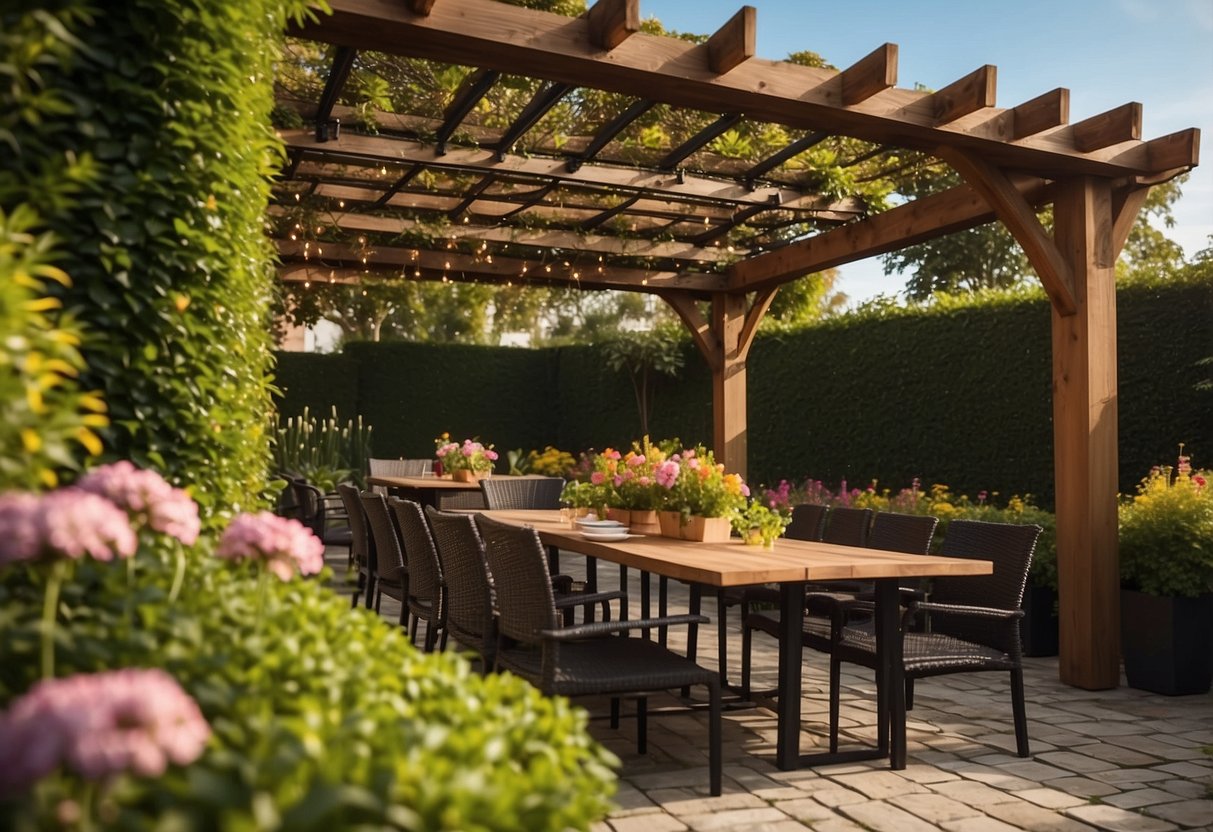
Creating an outdoor dining area in your rectangular garden can turn it into a delightful space for meals and gatherings. Choose a sturdy table and comfortable chairs that fit your style.
Add some shade with a stylish umbrella or a pergola. This will make dining outside enjoyable, even on sunny days.
Consider adding string lights or lanterns to create a cozy atmosphere for evening meals.
8) Portable Fire Pits
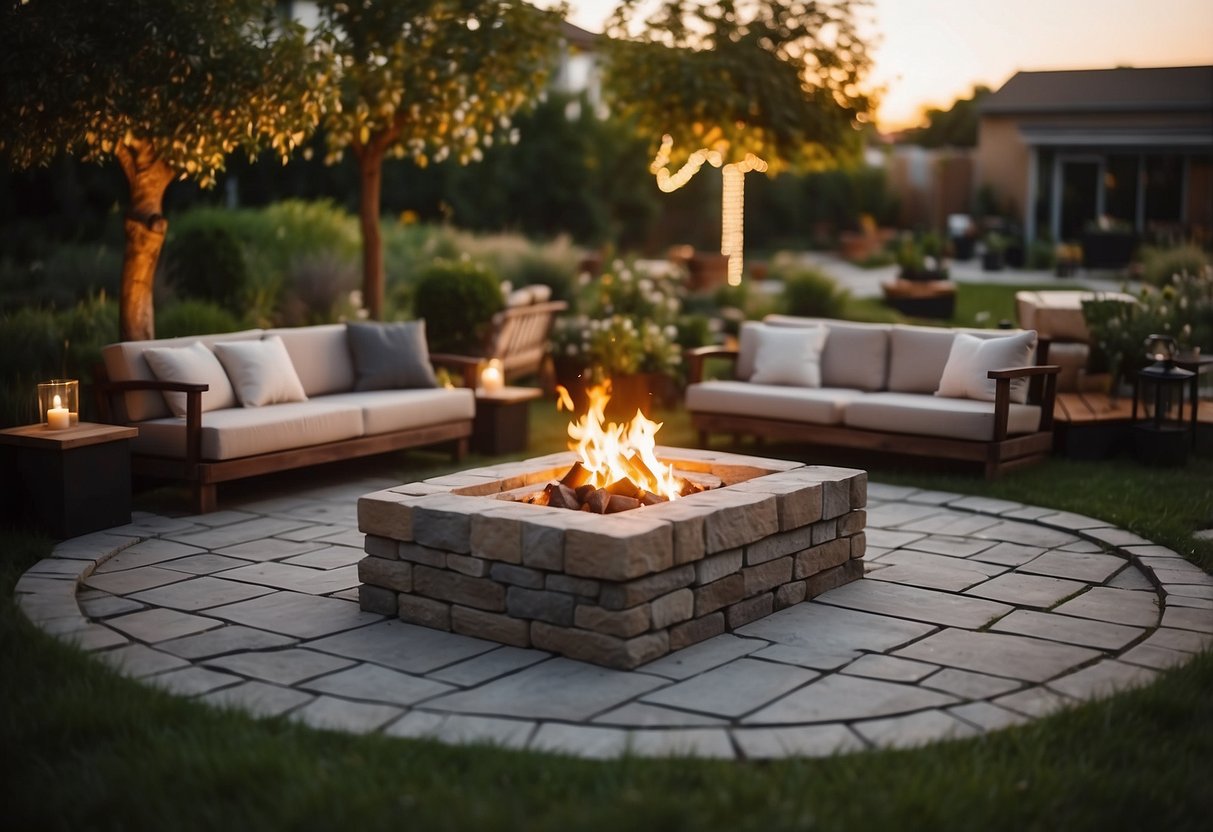
Portable fire pits are a great addition to any rectangular garden. They provide warmth and ambience without being permanent.
You can easily move them around your garden, making them flexible for different occasions. They are perfect for small spaces and can fit into cozy corners.
Consider a small wood-burning fire pit that doesn’t take up much space but still offers lots of charm. For more ideas, check out these fire pit ideas.
9) Container Shrubs

Adding container shrubs to your rectangular garden adds height and texture. You can use Skimmia, which is known for its fragrant flowers and berries.
For something unique, try the Korean Fir, a slow-growing evergreen that does well in pots.
Consider butterfly bushes for their fragrance and beautiful blooms from spring until fall.
These shrubs can easily be moved around to fit your design needs and provide year-round interest.
10) Garden Lighting

Adding lights to your rectangular garden can make it a cozy haven in the evening. For a unique look, try globe-shaped lights that bring a soft glow.
Consider using hanging solar lanterns along pathways. This not only lights up the way but also creates a warm, welcoming atmosphere.
Want to highlight certain plants? Place spotlights under them to showcase their beauty when the sun sets.
Designing Your Rectangular Garden

Designing a rectangular garden involves choosing a theme, creating focal points, and optimizing the space. These steps help you create a beautiful, functional outdoor area.
Choosing a Theme
First, think about how you want your garden to feel. Do you prefer a formal, orderly design or something more relaxed and natural? A formal theme might use symmetrical layouts with straight paths and clipped hedges.
For a casual look, try curved paths and a variety of plants. Your theme should match your personal style and the architecture of your home. Colors, materials, and plant types will all work together to create your chosen theme.
Creating Focal Points
Focal points draw the eye and give your garden a sense of structure. Place a sculpture, birdbath, or a unique plant in a spot where it will stand out. In addition, you can create a seating area with a storage bench surrounded by colorful flowers.
Paths and walkways also help guide the eye towards different features. Fencing off sections like patios can help create distinct areas within your garden, making it more interesting and organized.
Optimizing Space
Make the most of your rectangular garden by using the space wisely. Raised planting beds are great if you need extra soil depth and can add tiers to your garden layout. You can also include storage solutions like a small shed for tools.
Consider dividing your garden into different zones, such as a dining area, a play space for kids, and a vegetable patch. This way, each part of your garden serves a purpose and contributes to the overall flow. Multiple levels can make even a small garden seem larger and more dynamic.
Plant Selection Tips
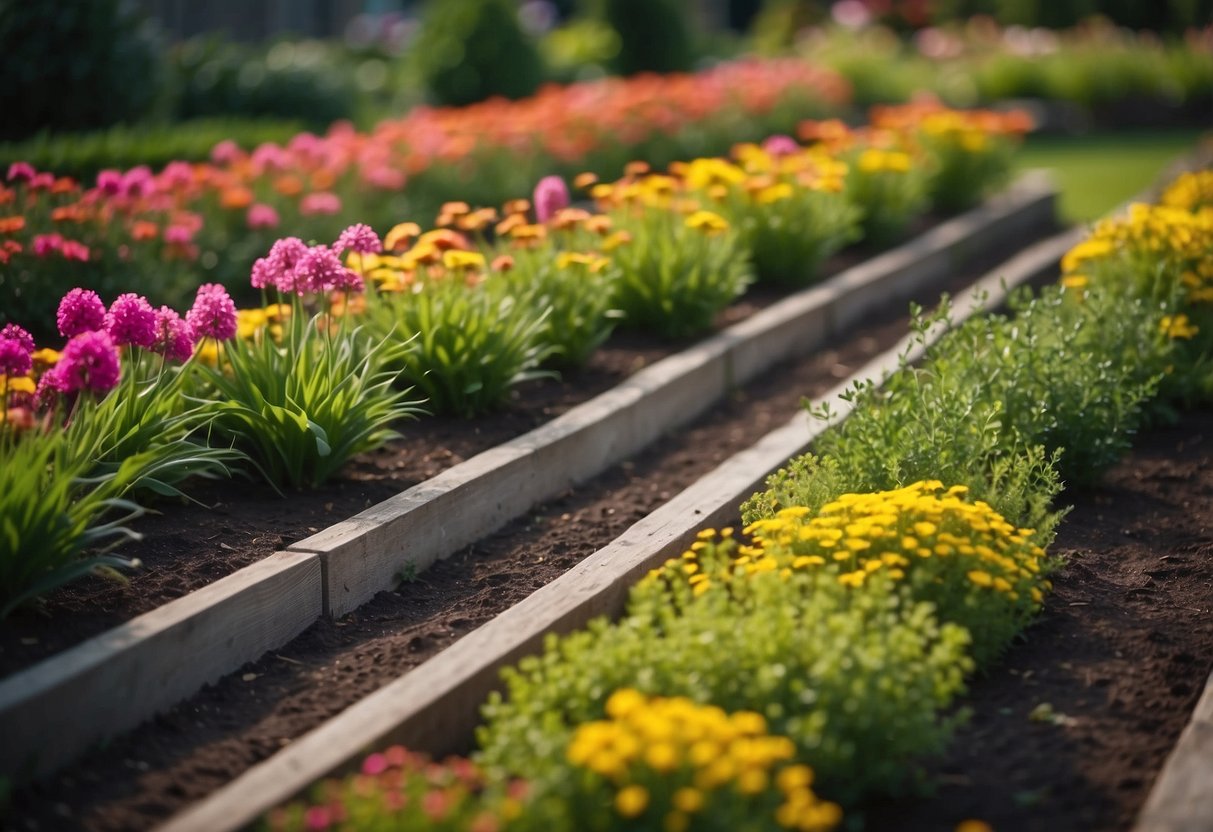
Choosing the right plants for your rectangular garden can make a big difference in how it looks and performs. You’ll need to decide between perennials and annuals, pick the best plants for the shape of your garden, and consider companion planting to make the most of your space.
Perennials vs. Annuals
Perennials come back year after year, saving you time and money on replanting. They establish strong root systems and can fill larger spaces in your rectangular garden. Some popular choices are:
- Lavender: Fragrant and attractive to pollinators.
- Hostas: Great for shady spots.
- Echinacea: Adds bright color and attracts butterflies.
Annuals, on the other hand, bloom all season but need to be replanted each year. They’re excellent for instant color and can fill gaps between perennials. Consider these options:
- Marigolds: Bright and good for pest control.
- Petunias: Variety of colors and easy to grow.
- Zinnias: Long blooming period.
Selecting a mix of perennials and annuals can give you both stability and seasonal variety in your garden.
Best Plants for Rectangular Gardens
In a rectangular garden, space is often limited, so you need to choose plants wisely. Vertical plants such as climbing roses or clematis can maximize your space by growing upwards.
Compact varieties are also key. For edging or smaller areas, use:
- Dwarf boxwood: Ideal for borders.
- Miniature roses: Small but showy.
Herbs like basil and thyme fit well at the garden’s edges or in tight corners. Consider using taller plants like sunflowers at the back of the garden to create a layered look.
Companion Planting
Companion planting involves growing plants together that benefit each other. This can improve growth, repel pests, and maximize space.
Tomatoes and basil are classic companions. Basil repels pests that love tomatoes and can also enhance their flavor.
Marigolds planted with vegetables can deter harmful insects and improve plant health.
Mix flowers like nasturtiums with cucumbers. Nasturtiums repel aphids and other pests while attracting beneficial insects.
Using companion planting can create a healthier, more visually appealing garden, taking advantage of the natural benefits of plant relationships.
Maintenance and Upkeep

Maintaining a rectangular garden involves regular watering, pruning, and controlling pests and weeds. These tasks ensure your garden stays healthy and beautiful.
Watering Strategies
Proper watering is essential for a flourishing rectangular garden. It’s crucial to establish a consistent watering schedule. Morning is the best time to water your plants because it allows moisture to soak in before the sun gets too hot.
Use a soaker hose or drip irrigation system to provide even moisture and avoid water waste. This method ensures your plants get the right amount of water without overdoing it.
For smaller gardens, hand-watering with a garden hose can be effective if done regularly. Remember to water the base of the plants to keep the foliage dry, which helps prevent mold and mildew.
Pruning Techniques
Pruning keeps your plants healthy and encourages new growth. For a neat appearance in your rectangular garden, it’s important to remove dead or diseased branches. This helps with air circulation and reduces the risk of pests.
Use clean, sharp tools like pruning shears for the best results. Different plants require different pruning times, so make sure to read up on the specific needs of your garden plants. Generally, prune blooming plants after they flower and prune shrubs in late winter or early spring.
Regular trimming of overgrown plants helps them maintain their desired shape and prevents them from crowding other plants.
Pest and Weed Control
Managing pests and weeds is vital for a healthy garden. Start by identifying common pests in your area and learning the signs of infestation. Natural predators like ladybugs can help keep pests under control without harmful chemicals.
For weed control, use mulch around your plants to prevent weeds from sprouting. Mulch also helps retain soil moisture which is beneficial for plant health. Regularly check your garden for weeds and remove them by hand or with a hoe.
If you encounter persistent pests or weeds, consider using organic pesticides and herbicides. These are less harmful to the environment and safer for beneficial insects and plants in your garden.







